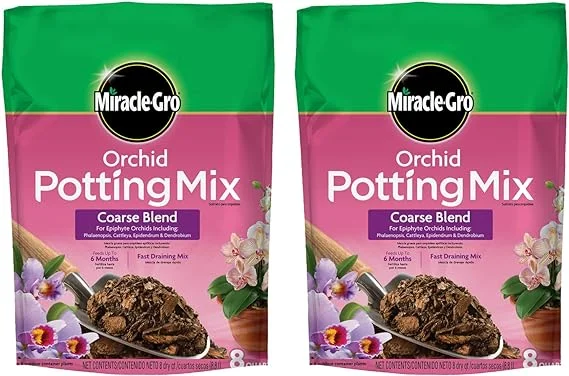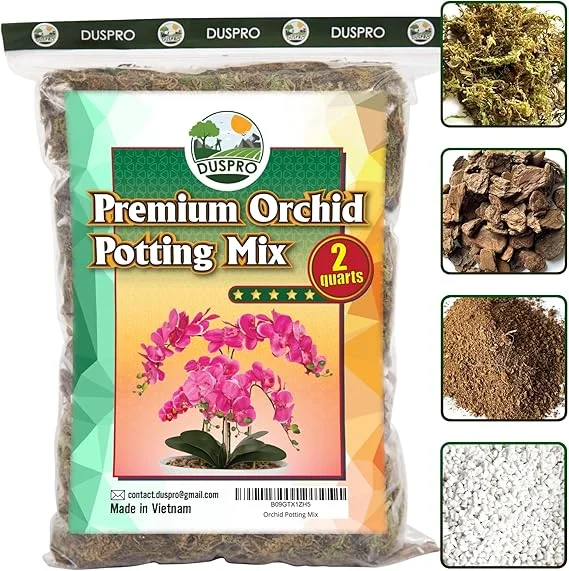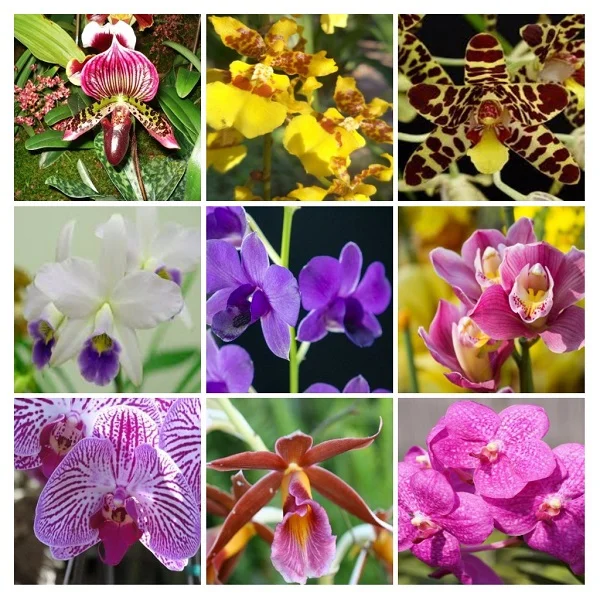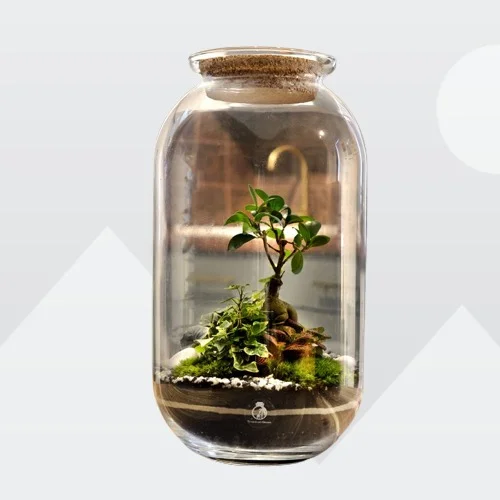Vriesea Bromeliads (Flaming Sword Bromeliads) Care Indoors, Propagation and Common Problems
Some links in this post may be affiliate links
Flaming Sword Bromeliads (Vriesea Bromeliads) grow best in bright indirect light, warm and humid conditions and moderately moist, rich, well-drained soil coupled with fortnightly feeding in the growing season.
In this guide, you will learn everything about Flaming Sword Bromeliads care, propagation, and how to solve their common plant problems. But first, let's get to know some facts about these exotic, low-maintenance plants.
Vriesea Bromeliads are typical Bromeliad varieties with a central vase surrounded by a rosette of arching, smooth-edged leaves about 1-1.5 feet long and an upright, sword-like, 2 feet long, flower-head with bright red bracts.
Some species of Vriesea Bromeliads like Vriesea hieroglyphica and Vriesea fenestralis are grown more for their striking foliage rather than for their blooms. Flaming Sword Bromeliads are among the best plants for the living room where they will create a great first impression.

Botanical name: Vriesea
Family: Bromeliaceae
Sufamily: Tillandsioideae
Common name: Flaming Sword Bromeliads
Origin
Vriesea species are widespread over Mexico, Central America, South America and West Indies where they grow as epiphytes on trees The genus name "Vriesea" is in honour of Willem Hendrik de Vriese, a Dutch Botanist and Physcian (1806-1862).
Flower
Flaming Sword Bromeliads may take 3-5 years to reach the flowering stage but the display may last upto 6 months. Once the flowering is over, the rosette of leaves begins to die and is replaced by offsets (pups) at the base of the plant which can be used to propagate new plants.
What is the lifespan of a Flaming Sword Bromeliad?
The lifespan of a Flaming Sword Bromeliad is 5-10 years; the length will depend on the extent of care and management. However, each plant blooms once after 3-5 years and dies being replaced by pups to continue the cycle.
Varieties
The common species of Vriesea Bromeliads include:
- Vriesea splendens: all-red, sword-like flower-head.
- Vriesea vulcana: all-red, spreading flower-head.
- Vriesea favorite: maroon and yellow, spreading flower-head.
- Vriesea carinata: red and yellow, spreading flower-head.
- Vriesea rodigasiana: yellow spreading flower-head.
- Vriesea hieroglyphica: grown for the striking foliage.
- Vriesea fenestralis: grown for the spectacular foliage.
Is Vriesea Bromeliad pet-friendly?
Vriesea Bromeliad is non-toxic to humans and pets. The plants are safe for cats and dogs.
Where to Buy
If you are looking to add Vriesea Bromeliads to your collection to elevate your home decor, check them out online on Amazon (Link to Amazon).
How to care for Flaming Sword Bromeliad indoors
Now, let’s explore on how to take care for Bromeliad Vriesea indoors. As you shall learn, these tropical beauties are incredibly easy to care for, even for beginners.
Flaming Sword Bromeliads flourish in bright indirect light, average warmth of 18-260C, humidity of 60-70% and moderately moist, fertile, well-drained, orchid's potting soil coupled with fortnightly feeding during the growing season.
Vriesea Bromeliads care requires pruning to keep it neat and also allow adequate room for the new plants to grow. Repotting may not be necessary as it has a small root system. Keep reading for more on these growing conditions and how to achieve them.
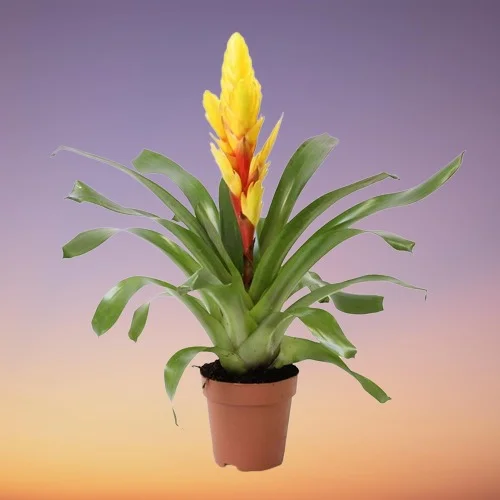
Watering
How to water Flaming Sword Bromeliad?
Flaming Sword Bromeliad require the central 'vase' to be filled with water at all times. Empty and refill the 'vase' every 5-7 days to prevent growth of bacteria which may cause the water to become smelly.
Use only chlorine-free water as they are sensitive to chlorine and other dissolved chemicals to which they respond with brown leaf tips and edges.
Moisten the soil only when it dries to keep the roots moist. Avoid soggy soil as it can lead to yellowing, root-rot and eventual death of the bromeliad.
Light Requirements
Flaming Sword Bromeliad blossoms in bright indirect light (dapped light). Keep it away from direct sunlight to avoid scorching the leaves.
If the light is too low, Vriesea Bromeliad may not bloom. Therefore, move to a brighter location or use a grow light if the natural lighting is not adequate.
Pro tip: Rotate the pot regularly to ensure the plant receives light on all sides for even growth.
Temperature and Humidity
Flaming Sword Bromeliad thrives in an average warmth of 18-260C. However, to bring it to flower requires temperatures above 260C. Keep it away from drafts to avoid temperature flactuations which may result in stunted growth, leaf curl, and wilting.
Vriesea Bromeliad requires a humidity of 60-70%. If the humidity is too low, it may cause leaf curl, brown leaf tips and reduced growth. To increase humidity, set the pot on a wet pebble tray, use a cool mist humidifier or group the plants together.
Pro tip: Ensure that there is good air flow for your bromeliad to minimize fungal diseases.
Potting Mix
The best potting mix for Flaming Sword Bromeliad should be rich in organic matter, loose, free-draining bark soil to prevent it from getting soggy while providing the required nutrients. Most orchid potting mixes are ideal for this bromeliad.
Feeding
Feed your Flaming Sword Bromeliad with a liquid fertilizer (foliar feed) every 2 weeks during the growing season. Pour the fertilizer directly into the central cup or mist the leaves. Be cautious when feeding as too much fertilizer can cause faded leaf colors and weak growth.
Do not feed in the cold season (fall and winter) as growth is minimal at this time and it may lead to fertilizer burn; leaf curl and brown burnt leaf tips and edges.
Pro tip: Apply a little Epsom salt (magnesium sulfate) once every few months to encourage stronger growth and vibrant colors.
Repotting
Repotting Vriesea Bromeliad is not necessary as its roots are tiny and are unlikely to fill the pot. Pot the bromeliad in a shallow, heavy pot to prevent it from toppling over as it can become top-heavy.
To help keep the bromeliad upright, provide it with support like a moss pole. Check out these ceramic pots with drainage holes and saucer on Amazon.
Pruning & Grooming
How to prune a Flaming Sword Bromeliad?
- Remove dead leaves and spent flowers to keep the plant neat and tidy and to allow adequate room for the new plants to grow. Cut the dead foliage at the base with a sharp, clean knife or pruning scissors for clean cuts and to avoid trasmitting diseases.
- Occasionally clean the leaves by damp-wiping with a soft cloth to keep them clean as well as discourage pest and disease infestations.
Propagation
How to propagate Flaming Sword Bromeliad?
Flaming Sword Bromeliads (Vriesea Bromeliads) propagation can be done from offsets (pups) appearing at the base of the plant.
Flaming Sword Bromeliads propagation from offsets (pups)
- Allow the offset (pup) to be 1/3 to 1/2 the height of mother plant so that it is strong enough to survive on its own.
- Separate the pup from the mother by cutting with a sharp, clean knife or pruning scissors. Ensure the pup has some roots attached to it.
- Give it a few hours to dry (callous) to prevent rotting.
- Plant the offset shallowly in loose, free-draining, bark soil.
- Use a shallow heavy pot to prevent the bromeliad from toppling over as it can get top-heavy.
- In addition, make sure that the bromeliad is well supported to prevent it from toppling over as its has a small root system.
- Place the set up in a warm, well-lit place and keep the soil slightly moist until the new plant is well established.
- Once the new Bromeliad is well established you can begin normal routine care. Pups take about 6 months to a year to mature.
Pro tip: If you would like to speed up blooming, place the bromeliad in a bag with a ripe pineapple. The Ethylene gas produced by the pineapple triggers flowering.
Learn more on how to propagate Bromeliads from pups (Bromeliad propagation from pups)
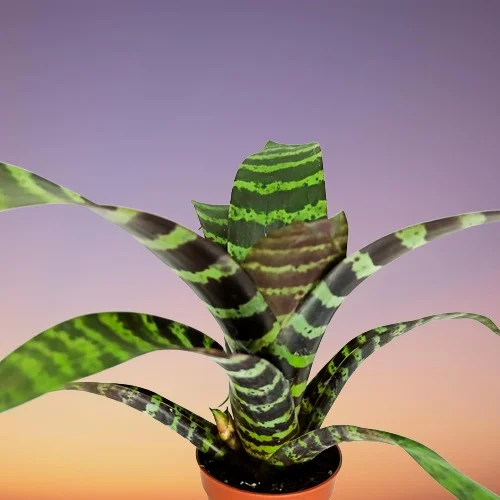
Vriesea Bromeliads Problems with Solutions
Flaming Sword Bromeliad (Vriesea Bromeliads) problems include plant dying, curling leaves, brown leaf tips, drooping leaves, leaf patches, diseases and pests among others. Keep reading for more on these problems, their remedies and solutions.
Why is my Flaming Sword Plant dying?
If the Flaming Sword Bromeliad has flowered then rotting and death of rosette which bore flower-stalk is natural to give room for the new plants.
Remove the dead foliage by cutting at the base with a clean knife or a pair of scissors to create space for the new plants.
If the Vriesea Bromeliad has not flowered, the cause of death is root-rot which is promoted by soggy soil.
How do I bring back my bromeliad to life?
- Carefully, slip the plant out of its pot, clean off the soil from the roots and inspect them.
- Cut away brown-black, mushy roots and treat the healthy roots with a fungicidal solution.
- Clean and disinfect the pot with the fungicidal solution and repot the plant in fresh soil. Keep it dry for a few days before beginning the regular watering.
- Ascertain that the soil is loose, bulky and well-draining and that the pot has a drainage hole.
- Always allow the soil to dry out slightly between waterings.
Why are the leaves on my Flaming Sword Plant curling?
The leaves on your Flaming Sword Plant are curling due to underwatering, overwatering, temperature stress, fertilizer burn and pests infestation.
How do you fix curled leaves?
- Underwatering: Keep the soil moderately moist and never allow it to dry out completely. Ensure that the central cup is filled at all times.
- Overwatering: Water only when the top 2-3 inches of soil feel dry. Do not water on a schedule.
- Temperature stress: Keep the plant away from drafts emanating from AC units, stoves, drafty windows, windy doors to avoid extreme temperatures.
- Fertilizer burn: Follow the directions on the label of the plant food to avoid overfeeding. Do not feed in the fall and winter as the growth has slowed.
- Pests: Regularly inspect your plant for these sap sucking insects and maintain the plant well pruned.
Brown leaf tips
Brown leaf tips on Flaming Sword Bromeliad are caused by too dry air or dissolved chemicals in the water. To raise humidity, set the pot on a wet pebble tray, use a cool mist humidifier or group the plants together. Use only filtered, distilled or rain water to water the plant.
Dark, soft, drooping, long leaves
Dark, soft, drooping, long leaves (leggy growth) on Flaming Sword Bromeliads are caused by too little light. Move the Bromeliad to a brighter spot or instal a grow light if the natural lighting is not enough.
Pale brown patches
Pale brown patches on Flaming Sword Bromeliad are due to exposing it to direct sunlight; it does not like to be exposed to direct sunshine. Protect or move it to a shadier spot where it will receive indirect light or instal a light curtain to filter the light.
Pests
Flaming Sword Bromeliads are prone to scales and mealybugs infestations. Isolate the affected plant to prevent spread to other plants and treat it with horticultural oil as per the manufacturer's recommendations.
Conclusion
Vriesea Bromeliads (Flaming Sword Bromeliads) are stunning, low-maintenance plants that thrive indoors with the right care. Whether you are growing one for its vibrant bloom or propagating pups, this plant is an excellent addition to any space.
Frequently Asked Questions
1. How long do Vriesea Bromeliads live?
A mature Vriesea Bromeliad lives 3-5 years, but it produces pups before dying, allowing you to continue the cycle.
2. Do Vriesea Bromeliads bloom more than once?
No, Vriesea Bromeliads are monocarpic, meaning they bloom once before producing pups and dying.
3. Can I grow Vriesea Bromeliads in a terrarium?
Yes. Vriesea Bromeliads thrive in humid terrariums, just ensure proper air circulation to prevent rot.
4. Is Vriesea Bromeliad pet-safe?
Yes. Vriesea Bromeliads are non-toxic to cats and dogs.
You liked it? Share on social media.
Related Content
Amazon Associates Disclosure
Homeplantsguide.com is a participant in the Amazon Services LLC Associates Program, an affiliate advertising program designed to provide a means for sites to earn advertising fees by advertising and linking to amazon.com.

